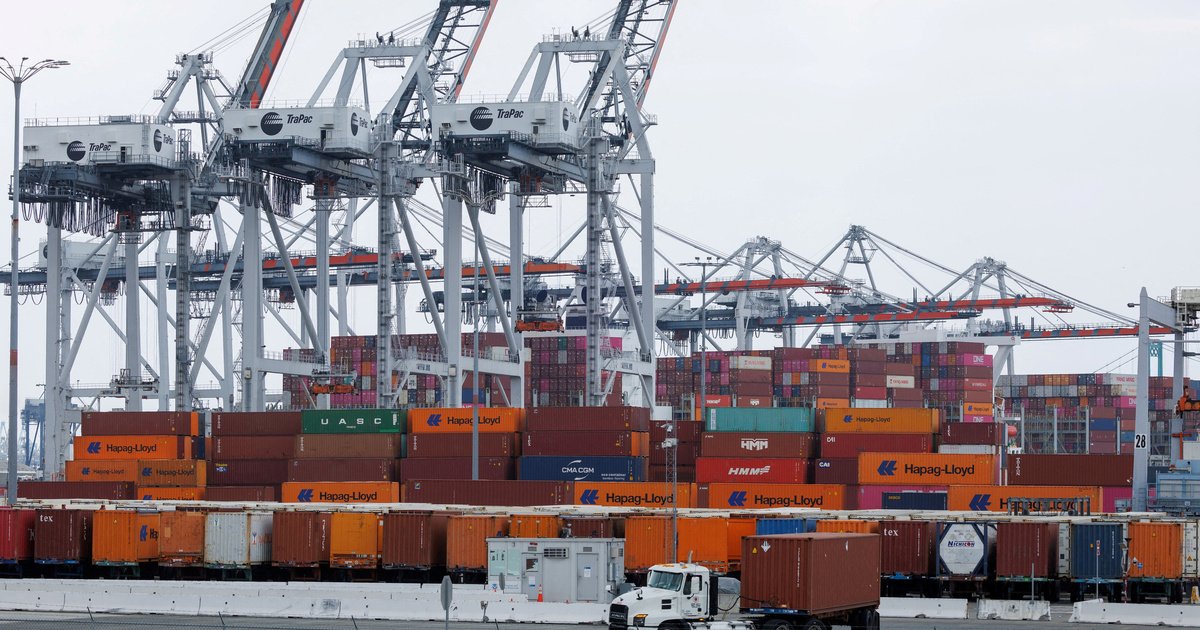Donald Trump Wants Reciprocity in Trade: Here’s a Closer Look – Council on Foreign Relations
Source: Council on Foreign Relations
Backgrounder
by Lindsay Maizland and Clara Fong
January 21, 2025
Renewing America
Backgrounder
by Lindsay Maizland
January 31, 2022
How Tobacco Laws Could Help Close the Racial Gap on Cancer
Interactive
by Olivia Angelino, Thomas J. Bollyky, Elle Ruggiero and Isabella Turilli
February 1, 2023
Global Health Program
Tariffs on Trading Partners: Can the President Actually Do That?
Report
by Inu Manak and Helena Kopans-Johnson
February 4, 2025
Greenberg Center for Geoeconomic Studies
Oil and Petroleum Products
Webinar
with Carolyn Kissane and Irina A. Faskianos
April 12, 2023
Artificial Intelligence (AI)
Malcolm and Carolyn Wiener Annual Lecture on Science and Technology: A Conversation With Reid Hoffman (255965)
Virtual Event
with Reid Hoffman and Deven J. Parekh
January 30, 2025
The president’s plan for reciprocal tariffs sounds good in theory. But there was a reason the United States abandoned the approach a century ago. The gains would be few and the costs enormous.
Article
by
Edward Alden, Author and
Jennifer Hillman, Author
President Donald Trump is right about reciprocity—a fair balance of tariff concessions among countries has long been integral to U.S. trade policy. But his administration seems confused about how it works in the real world. And his plans—such as they are known—for imposing reciprocal tariffs on a country-by-country basis would be an administrative nightmare.
The White House announced Thursday that it was directing the U.S. Trade Representative’s Office and the Department of Commerce to launch an investigation into tariff and other trade practices around the world to establish the new reciprocal U.S. tariff rates. “It’s time to be reciprocal,” Trump told reporters earlier this week. “You’ll be hearing that word a lot. Reciprocal. If they charge us, we charge them.” But perhaps recognizing the complexity, the White House is moving slowly; trade advisor Peter Navarro said the administration would first “look at all our trading partners, starting with the ones with which we run the biggest trade deficits.”
Reciprocity, to be clear, is a powerful idea. The American people would never have supported the gradual removal of tariffs and other barriers to freer trade without a belief that other countries were doing the same. The growing sense that others—especially big developing nations such as China and India—are not making similar commitments has certainly weakened U.S. public support for the global trading system. In the best possible outcome, Trump’s reciprocity initiative could open the door to negotiating long-overdue corrections to those discrepancies. But poorly enacted, it would blow up what remains of global trade rules and leave American companies crippled in their ability to compete in international markets.
A curation of original analyses, data visualizations, and commentaries, examining the debates and efforts to improve health worldwide. Weekly.
Reciprocity has been the foundation of U.S. participation in global trade negotiations since the 1930s. In 1934—chastised in part by the disaster of the 1930 Smoot-Hawley tariff increases, when other countries raised their own tariffs to retaliate against the United States—Congress empowered President Franklin D. Roosevelt to negotiate “reciprocal” tariff reductions with other countries. The 1934 Reciprocal Trade Agreements Act (RTAA) led to the negotiation of nearly two dozen agreements over the next five years to lower U.S. and foreign tariffs, including with the two largest trading partners, Canada and Great Britain.
At the time, both Congress and the president recognized that negotiating specific tariffs on a country-by-country basis would be impossibly complex; overburdened Customs agents would have been forced to determine the national origins of every product entering the country in order to levy the proper tax on the U.S. importer. Instead, starting in 1923, and then legislated by Congress in the RTAA [PDF], the United States embraced what would become known as the “most-favored-nation” (MFN) principle, in which U.S. tariffs on imports would be identical for all countries, with occasional exceptions for goods deemed unfairly traded or for free trade partners.
Reciprocity and the MFN principle turned out to be world-changing ideas that over the following decades persuaded most countries to lower tariffs and participate fully in global trade. In the United States, as trade economist Richard Baldwin has argued,
Read more: Click here
